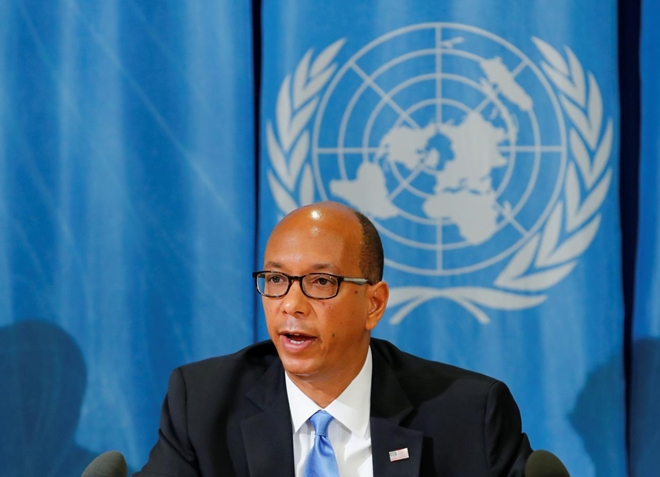U.S. calls on Russia to destroy new missile system
 |
| U.S. Ambassador to the Conference on Disarmament Robert Wood attends a news conference at the United Nations in Geneva, Switzerland, April 19, 2018. |
Robert Wood, U.S. disarmament ambassador, said the system was capable of carrying both conventional and nuclear warheads and represented a “potent and direct threat to Europe and Asia” as it had a range of 500 to 1,500 kilometers (310-620 miles).
The United States last week rejected a Russian offer to save the landmark INF treaty that keeps nuclear missiles out of Europe because it could not be properly verified, setting the stage for Washington to withdraw from the pact next month.
“Unfortunately, the United States increasingly finds that Russia cannot be trusted to comply with its arms control obligations and that its coercive and malign actions around the globe have increased tensions,” Wood told the U.N.-sponsored Conference on Disarmament.
There was no immediate response from the Russian delegation at the 65-member state Geneva forum, which opened its 2019 session.
Russia has flight-tested the “illegal missile”, known as the SSC-8/9M729, and taken no concrete steps to return to compliance with the INF pact, Wood said.
“Russia must verifiably destroy all SSC-8 missiles, launchers and associated equipment in order to come back into compliance with the INF Treaty,” he said, reiterating the plan of Donald Trump’s administration to withdraw from the 1987 pact in early February.
Wood also decried Russian support for Syrian President Bashar al-Assad and its providing Iran with “advanced weaponry such as the S-300 missile defense system”.
The nerve agent used in an attempt to assassinate former Russian spy Sergei Skripal and his daughter Yulia in Salisbury, Britain last March showed Russia’s “reckless behavior” and failure to meet its obligations under a treaty banning the use of chemical weapons, he said.
Britain says Russian GRU military intelligence agents poisoned the Skripals with Novichok. Moscow denies involvement in the poisoning, which the pair survived.

